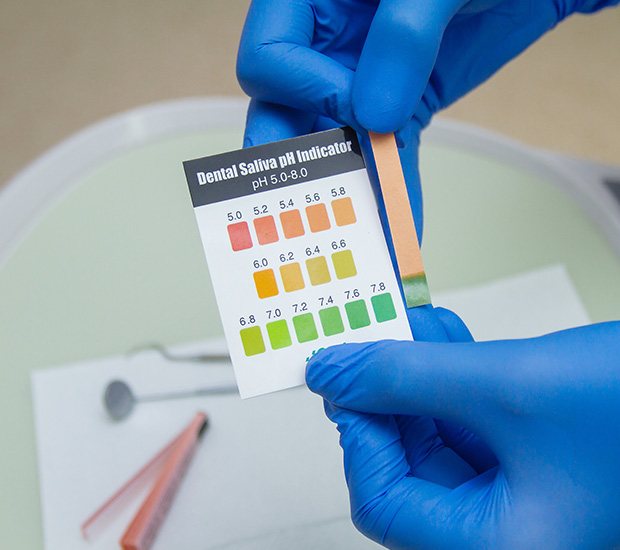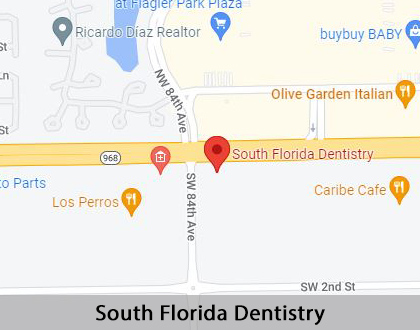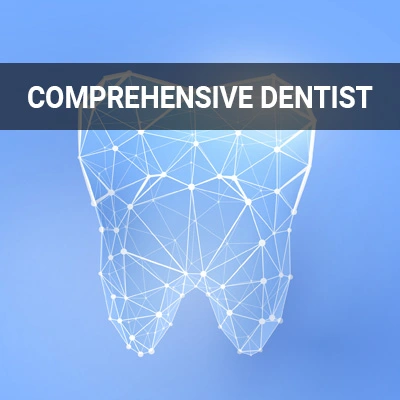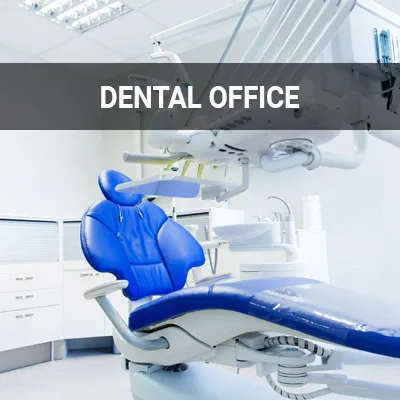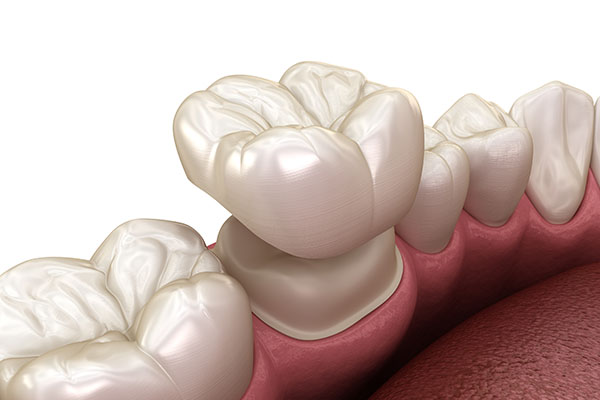Saliva pH Testing Miami, FL
As a part of complete health dentistry, saliva pH levels not only assess the hydrogen levels in the mouth but the body as a whole. The pH level of the mouth can differ from the rest of the body at different times of the day, but the saliva's pH affects the body nonetheless. Saliva pH reveals the connection between oral and systemic health, and understanding the link can significantly enhance one's wellbeing.
The level of pH in saliva plays a tremendous role in oral health and hygiene. The levels fluctuate depending on the type of food and drinks consumed throughout the day, but consistently low or high levels can severely impact the teeth and gums. Knowing the meaning behind pH levels, controlling them, and recognizing the various foods and beverages that positively influence the oral cavity can promote not only oral health but complete systemic health.
Complete health dentistry and saliva ph testing are available at South Florida Dentistry in Miami and the surrounding area. We can provide information regarding saliva pH testing and answer any questions you may have. Call us at (305) 203-4097 to learn more or schedule a consultation appointment.
The Meaning of Different pH Levels
Known as pH, or potential hydrogen, this term describes a substance's chemical acidity level vs. its alkalinity level, with 14 being the most alkaline and zero being the most acidic. Saliva typically falls in a pH range of 6.2 to 7.6, and this can change due to food and drink. Additionally, aging results in more acidic saliva.
Since the human body is made up of approximately 60% water, the ideal pH should be close to 7.0, or water. A low pH level indicates too much acid in the blood and may preclude metabolic acidosis, which is associated with diabetes, high blood pressure, kidney disease, and other related conditions. A high pH level indicates too much alkaline in the blood and may preclude a metabolic alkalosis, which is associated with adrenal disease and alcohol abuse.
“Saliva typically falls in a pH range of 6.2 to 7.6, and this can change due to food and drink.”
Acidic pH Levels
Acidic beverages can cause the pH level of one's saliva to decrease below 5.5. Once this occurs, the acids in the mouth may begin to break down, or demineralize, the tooth enamel. Tooth enamel that becomes too thin will expose the dentin, leading to temperature sensitivity and discomfort when drinking sugary beverages.
According to one 2013 study published in the Journal of Indian Society of Periodontology, participants with chronic generalized periodontitis had a relatively more acidic salivary pH than the clinically healthy group. Saliva pH below 7.0 is typically an indication of acidemia, which results in an abnormal amount of acidity in the blood. If the patient has a chronic condition, they are at heightened risk for dental decay, halitosis, and periodontitis and, since oral health is directly linked with overall health, a slew of systemic diseases.
“Saliva pH below 7.0 is typically an indication of acidemia, or abnormal acidity of the blood.”
Alkaline pH Levels
Persons with alkaline saliva pH levels (that is, a pH higher than 7.0) tend to experience the same symptoms as persons with acidic saliva pH levels. These include persistent bad breath, sensitivity to hot or cold foods and beverages, and tooth cavities.
Alkalosis may be attributed to an inadequate supply of carbon dioxide in the bloodstream, a significant loss of acid, a critical decline of chlorine, or an inadequate supply of potassium in the body. However, the condition itself is much rarer than acidemia. Alkaline pH is conducive to plaque growth. As such, it should come as no surprise that the aforementioned 2013 study found that participants with chronic generalized gingivitis had comparatively more alkaline saliva pH levels when compared to the clinically healthy group.
“Alkaline pH is conducive to plaque growth.”
Check out what others are saying about our dental services on Yelp: Saliva pH Testing in Miami, FL
Performing the Test
Salivary pH levels can be tested in our office using pH strips. Patients should not eat or drink for at least two hours prior to the test to attain the most accurate results. As pH levels change throughout the day with food and beverages, the test results may be inconclusive.
To perform the test, the patient needs to collect and fill their mouth with saliva, then spit it out. They will repeat the process of collecting and filling the mouth, but this time, placing saliva on a test strip. The strip will change colors according to the pH level, red being the lowest (acidic) and purple being the highest (alkaline). We will be able to tell you the exact pH number.
“The strip will change colors according to the pH level, red being the lowest (acidic) and purple being the highest (alkaline).”
Questions Answered on This Page
Q. What causes an acidic saliva pH?
Q. What are the symptoms of alkalinity?
Q. How can I improve my saliva pH levels?
People Also Ask
Q. What are some conditions that a complete health dentist can diagnose?
Q. What can complete health dentistry do for my TMJ?
Q. Why is preventative care important? How can it save you money?
Q. What family members may need extra help with their oral hygiene?
Improving Saliva pH Levels
Luckily, there are several steps patients can take to improve their saliva pH levels. This includes avoiding acidic beverages, such as soft drinks. If patients must drink acidic beverages, they should refrain from swishing them around in the mouth. They may also want to consider rinsing their mouth with water after eating or drinking, regardless of whether acidic beverages are involved.
Chewing sugarless gum can also help increase the saliva flow, thus washing away any acids. Milk and other calcium-containing foods and beverages may also help neutralize acids. Furthermore, it is best to wait an hour to brush teeth after eating something acidic, giving the saliva time to wash away acids and remineralize the enamel.
“Luckily, there are several steps patients can take to improve their saliva pH levels.”
Frequently Asked Questions About Saliva pH Testing
Q. Why is it bad to brush my teeth while my mouth is acidic?
A. Brushing your teeth while your mouth is at peak acidity can cause you to brush away the dissolved minerals, causing the weakened surface to become more susceptible to damage. As such, it is best to wait at least an hour after you have consumed acidic foods or beverages before brushing teeth. Rinsing with plain water immediately after eating can also raise your pH levels while removing loose food particles.
Q. What is saliva made up of?
A. Saliva comprises over 99% water. However, saliva collected from the mouth also contains desquamated oral epithelial cells, leucocytes, fluid from the gingival crevice, food remnants, and microorganisms and their products.
Q. Does tobacco use affect salivary pH?
A. Yes. A study published in the Journal of Oral and Maxillofacial Pathology found that tobacco smokers and tobacco chewers had significantly more acidic salivary pH levels than those who did not use tobacco at all.
Q. What happens if your salivary pH levels drop too low?
A. Once your salivary pH levels drop below 5.5, the tooth enamel will begin to break down. This damage is permanent, as tooth enamel cannot grow back. Teeth may become sensitive, and you may notice a yellowish discoloration. This also makes you more susceptible to cavities.
Q. How can I keep a balanced pH in my mouth?
A. Limit your intake of sugary soft drinks and black coffee. If you must indulge, drink them quickly and rinse afterward with a drink of water. Add dairy to your coffee to counteract the acidity. Chew gum, preferably one with xylitol, to encourage saliva production. Finally, stay hydrated by drinking plenty of pH-balanced water.
Dental Terminology
Learn More Today
If you are interested in better understanding complete health dentistry or information regarding saliva ph testing, call us at 305-203-4097 to set up an appointment.
Helpful Related Links
- American Dental Association (ADA). Glossary of Dental Clinical Terms. 2025
About our business, and website security
- South Florida Dentistry was established in 1997.
- We accept the following payment methods: American Express, Cash, Check, Discover, MasterCard, and Visa
- We serve patients from the following counties: Miami-Dade County
- We serve patients from the following cities: Miami, Doral, Hialeah, Fontainebleau, Hialeah Gardens, Sweetwater, Coral Gables, Kendall, South Miami, Miami Lakes, Miami Gardens, Medley, Westchester and Brickell
- Healthgrades. View Background Information and Reviews
- Norton Safe Web. View Details
- Trend Micro Site Safety Center. View Details
Back to top of Saliva pH Testing
